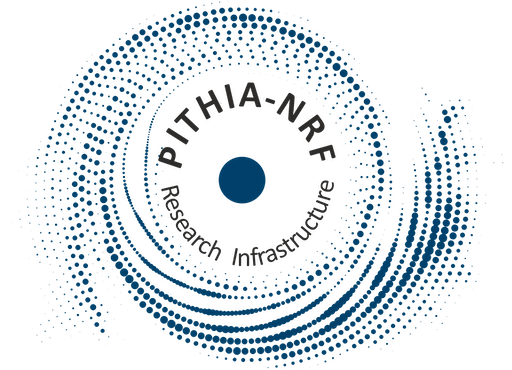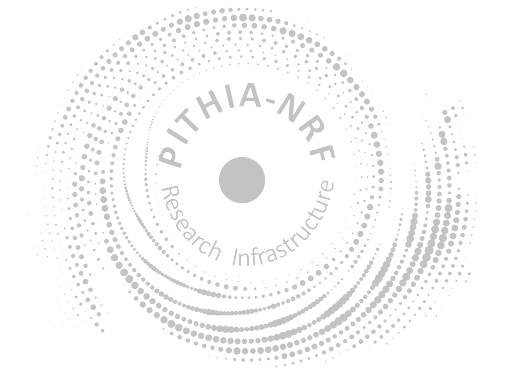<?xml version="1.0" encoding="UTF-8"?>
<Project xmlns="https://metadata.pithia.eu/schemas/2.2" xmlns:xsi="http://www.w3.org/2001/XMLSchema-instance" xmlns:xlink="http://www.w3.org/1999/xlink" xmlns:gmd="http://www.isotc211.org/2005/gmd" xmlns:gco="http://www.isotc211.org/2005/gco" xsi:schemaLocation="https://metadata.pithia.eu/schemas/2.2 https://metadata.pithia.eu/schemas/2.2/pithia.xsd">
<identifier>
<PITHIA_Identifier>
<localID>Project_KUL_EUHFORIA</localID>
<namespace>kul</namespace>
<version>2</version>
<creationDate>2022-09-25T08:50:00Z</creationDate>
<lastModificationDate>2022-03-27T14:35:48Z</lastModificationDate>
</PITHIA_Identifier>
</identifier>
<name>EUHFORIA: Heliospheric wind and CME evolution</name>
<shortName>EUHFORIA</shortName>
<abstract>
EUHFORIA provides the heliospheric wind derived from a magnetogram, with superposed
CMEs defined by the user or uploaded from a database.
</abstract>
<description>
The EUHFORIA (European Heliospheric FORecasting Information Asset) model
aims to provide a full Sun-to-Earth modelling chain combining efficient data-driven,
semi-empirical, forward approaches with physics-based models wherever appropriate.
It consists of two parts, viz. a coronal module and a heliospheric solar wind module
that enables superimposed CME evolution. The modules can be run together or each module
can be run separately if wanted. The aim of the coronal module is to provide the required
MHD input quantities at 21.5 Rs for the heliospheric solar wind module. The coronal module
in EUHFORIA is data-driven and combines a PFSS magnetic field extrapolation from GONG or
ADAPT magnetograms (1 – 2.5 Rs) with the semi-empirical Wand-Sheely-Arge (WSA) model and
the Schatten current sheet (SCS) model to extend the velocity and magnetic field from 2.5
Rs to 21.5 Rs. This is done in combination with other semi-empirical formulas so that
also the density and the temperature is given at 21.5 Rs.The heliosphere module of
EUHFORIA ( Pomoell and Poedts, 2018) provides the solar wind from 21.5 Rs to 2 AU
(or further if necessary). Input at 21.5Rs is provided by a coronal module, for example,
EUHFORIA-Corona. It initially extends the (purely radial) velocity and magnetic field to
2 AU and subsequently relaxes this initial MHD solution by applying a rotating inner
boundary to create the solar background wind in a relaxed state. This yields a steady
solar wind from 21.5 Rs to 2 AU in the co-rotating frame, as the inner boundary condition
is not updated, but merely rotated. The coordinate system of the model is HEEQ.Apart from
providing the background solar wind, the EUHFORIA-heliosphere model is also able to launch
CME models superimposed on the background solar wind. Therefore, it can simulate CME
evolution up to 2 AU (and beyond, if required). It currently has the classic cone CME
model fully supported and a novel Gibson-Low flux-rope CME model is being under
development. In contrast with the classic cone model, the Gibson-Low flux-rope model
not only enables to model the CME shock evolution but also the internal magnetic structure
of the IP magnetic cloud following the shock. The magnetic field of the CME is not modelled
with the cone model. The Gibson-Low model was added into EUHFORIA recently and is not yet
capable of predicting the flux rope parameters for efficient forecasting. However, in the
future efforts will be made towards this goal and the VSWMC will be a great way to test
the prediction capabilities of this flux-rope model.
</description>
<URL><gmd:URL>https://swe.ssa.esa.int/kul-cmpa-federated</gmd:URL></URL>
<documentation>
<Citation>
<gmd:title><gco:CharacterString>EUHFORIA: European heliospheric forecasting information asset</gco:CharacterString></gmd:title>
<gmd:date>
<gmd:CI_Date>
<gmd:date><gco:Date>2018-06-26</gco:Date></gmd:date>
<gmd:dateType>
<gmd:CI_DateTypeCode codeList="" codeListValue="">Publication Date</gmd:CI_DateTypeCode>
</gmd:dateType>
</gmd:CI_Date>
</gmd:date>
<gmd:identifier>
<gmd:MD_Identifier><gmd:code><gco:CharacterString>
doi:10.1051/swsc.2018020
</gco:CharacterString></gmd:code></gmd:MD_Identifier>
</gmd:identifier>
<gmd:otherCitationDetails>
<gco:CharacterString>
Jens Pomoell and S. Poedts, EUHFORIA: European heliospheric forecasting information asset. J. Space Weather Space Clim., 8 (2018) A35
</gco:CharacterString>
</gmd:otherCitationDetails>
<onlineResource>
<gmd:CI_OnlineResource>
<gmd:linkage><gmd:URL>https://doi.org/10.1051/swsc/2018020</gmd:URL></gmd:linkage>
</gmd:CI_OnlineResource>
</onlineResource>
</Citation>
</documentation>
<keywords>
<gmd:MD_Keywords>
<gmd:keyword><gco:CharacterString>Corona</gco:CharacterString></gmd:keyword>
<gmd:keyword><gco:CharacterString>Heliosphere</gco:CharacterString></gmd:keyword>
<gmd:keyword><gco:CharacterString>Mars</gco:CharacterString></gmd:keyword>
<gmd:keyword><gco:CharacterString>Mercury</gco:CharacterString></gmd:keyword>
<gmd:keyword><gco:CharacterString>Venus</gco:CharacterString></gmd:keyword>
<gmd:keyword><gco:CharacterString>Remote 1AU Heliosphere</gco:CharacterString></gmd:keyword>
<gmd:type><gmd:MD_KeywordTypeCode codeList="#pr3" codeListValue="Observed Region"/></gmd:type>
</gmd:MD_Keywords>
</keywords>
<keywords>
<gmd:MD_Keywords>
<gmd:keyword><gco:CharacterString>Space Weather model</gco:CharacterString></gmd:keyword>
<gmd:keyword><gco:CharacterString>Coronal Model</gco:CharacterString></gmd:keyword>
<gmd:keyword><gco:CharacterString>Heliospheric Model</gco:CharacterString></gmd:keyword>
<gmd:keyword><gco:CharacterString>MHD model</gco:CharacterString></gmd:keyword>
<gmd:type><gmd:MD_KeywordTypeCode codeList="#pr3" codeListValue="Instrument"/></gmd:type>
</gmd:MD_Keywords>
</keywords>
<keywords>
<gmd:MD_Keywords>
<gmd:keyword><gco:CharacterString>Solar wind</gco:CharacterString></gmd:keyword>
<gmd:keyword><gco:CharacterString>CME</gco:CharacterString></gmd:keyword>
<gmd:keyword><gco:CharacterString>Coronal mass ejection</gco:CharacterString></gmd:keyword>
<gmd:keyword><gco:CharacterString>Solar wind boundary</gco:CharacterString></gmd:keyword>
<gmd:type><gmd:MD_KeywordTypeCode codeList="#pr3" codeListValue="Miscellaneous"/></gmd:type>
</gmd:MD_Keywords>
</keywords>
<keywords>
<gmd:MD_Keywords>
<gmd:keyword><gco:CharacterString>Plasma Density</gco:CharacterString></gmd:keyword>
<gmd:keyword><gco:CharacterString>Plasma Velocity</gco:CharacterString></gmd:keyword>
<gmd:keyword><gco:CharacterString>Plasma Temperature</gco:CharacterString></gmd:keyword>
<gmd:keyword><gco:CharacterString>Plasma Thermal Pressure</gco:CharacterString></gmd:keyword>
<gmd:keyword><gco:CharacterString>Magnetic Field</gco:CharacterString></gmd:keyword>
<gmd:keyword><gco:CharacterString>Plasma Temperature</gco:CharacterString></gmd:keyword>
<gmd:type><gmd:MD_KeywordTypeCode codeList="#pr2" codeListValue="Products"/></gmd:type>
</gmd:MD_Keywords>
</keywords>
<relatedParty>
<ResponsiblePartyInfo>
<role xlink:href="https://metadata.pithia.eu/ontology/2.2/relatedPartyRole/PrincipalInvestigator"/>
<party xlink:href="https://metadata.pithia.eu/resources/2.2/individual/kul/Individual_KUL_Poedts"/>
</ResponsiblePartyInfo>
</relatedParty>
<relatedParty>
<ResponsiblePartyInfo>
<role xlink:href="https://metadata.pithia.eu/ontology/2.2/relatedPartyRole/ServiceProvider"/>
<party xlink:href="https://metadata.pithia.eu/resources/2.2/organisation/pithia/Organisation_KUL"/>
</ResponsiblePartyInfo>
</relatedParty>
<status xlink:href="https://metadata.pithia.eu/ontology/2.2/status/OnGoing"/>
</Project>

